In my years of supplying plumbing materials, I’ve seen many clients confused about CPVC certifications. They often ask if CPVC pipes are truly safe for drinking water applications.
Yes, CPVC (Chlorinated Polyvinyl Chloride) does meet NSF drinking water standards when properly certified. CPVC pipes and fittings used for potable water must comply with NSF/ANSI 61, which specifically evaluates the health effects of drinking water system components. Manufacturers must also meet NSF/ANSI 14 for material performance and physical properties.
Understanding these standards is crucial for selecting safe plumbing materials. Let me break down the specifics to help you make informed decisions for your water systems.
Which Specific NSF Standards Apply to CPVC Drinking Water Pipes?
I’ve noticed many contractors assume all CPVC pipes are automatically certified. This misconception can lead to serious compliance issues.
The primary NSF standards for CPVC drinking water pipes are NSF/ANSI 61 and NSF/ANSI 14. NSF/ANSI 61 assesses potential contaminants that might leach into drinking water, while NSF/ANSI 14 covers material performance requirements including dimensions, pressure ratings, and burst pressure.

Understanding the Two Key Standards
When selecting CPVC pipes for drinking water applications, you need to understand two main NSF standards. These standards work together to ensure both safety and performance.
NSF/ANSI 61 is the health effects standard. It evaluates the potential for pipes and fittings to introduce contaminants into drinking water. The testing examines what substances might leach from the CPVC material into water under various conditions. This includes testing for metals, chemicals, and other potential contaminants.
NSF/ANSI 14 covers the physical properties and performance requirements. This standard ensures the CPVC material will perform as expected in plumbing systems. It verifies dimensions are consistent, pressure ratings are accurate, and the material can withstand expected operating conditions.
Additional Relevant Standards
Besides these main standards, there are other NSF standards that might apply depending on your specific application:
- NSF/ANSI 372: This standard covers lead content requirements. It verifies that the CPVC products meet the low-lead requirements for drinking water systems.
- NSF PW-1: This is a newer standard that combines requirements from both NSF/ANSI 61 and NSF/ANSI 14 into a single document for plastic piping system components.
NSF Standards Comparison Table
| Standard | Purpose | Testing Focus | Required for Drinking Water? |
|---|---|---|---|
| NSF/ANSI 61 | Health Effects | Contaminant leaching | Yes |
| NSF/ANSI 14 | Material Performance | Physical properties, dimensions | Yes |
| NSF/ANSI 372 | Lead Content | Lead content verification | Yes (in many jurisdictions) |
| NSF PW-1 | Comprehensive | Combined health & performance | Yes (alternative to 61 & 14) |
Many clients don’t realize that both standards are necessary for complete compliance. I always recommend checking for both NSF/ANSI 61 and NSF/ANSI 14 certifications when selecting CPVC pipes for drinking water applications.
What Testing Procedures Verify CPVC Compliance with NSF/ANSI 61?
From our factory audit experience, I can confirm that NSF testing is rigorous and comprehensive.
NSF/ANSI 61 testing involves extracting CPVC samples in various water conditions to identify potential contaminants. The testing examines migration of volatile and semi-volatile organic compounds, metals, and other regulated substances. Samples are tested after manufacturing and again after accelerated aging to simulate long-term use.

The Extraction Testing Process
The core of NSF/ANSI 61 testing involves extraction procedures that simulate real-world conditions. CPVC samples are exposed to different water types for specific periods at controlled temperatures.
First, manufacturers must submit production samples from their actual manufacturing facilities. These aren’t special lab-made samples but real production items. The samples undergo extraction using three different water types:
- High-purity water – to detect soluble contaminants
- Aggressive water – with specific pH and mineral content to simulate challenging water conditions
- Air exposure – to test for potential contamination during storage and handling
Contaminant Analysis
After extraction, the water samples are analyzed for numerous potential contaminants. The testing looks for:
- Volatile organic compounds (VOCs) like benzene and toluene
- Semi-volatile organic compounds including plasticizers and stabilizers
- Metals such as lead, cadmium, and mercury
- Other regulated substances that might migrate from the CPVC material
The testing uses sophisticated equipment including gas chromatographs and mass spectrometers to detect contaminants at extremely low levels, often in parts per billion.
Long-Term Performance Testing
Beyond initial testing, CPVC products must demonstrate compliance over time. This involves:
- Accelerated aging tests that simulate years of service in a compressed timeframe
- Heat aging to verify material stability
- UV exposure testing for products that might be stored in sunlight
- Multiple production batches tested to ensure consistent quality
Testing Duration and Frequency
| Test Type | Duration | Frequency | Purpose |
|---|---|---|---|
| Initial Certification | 4-6 weeks | Once for certification | Establish baseline compliance |
| Annual Surveillance | 2-3 weeks | Yearly | Maintain certification |
| Unannounced Audits | 1-2 days | Random | Verify ongoing compliance |
| Material Change Testing | 2-4 weeks | When formula changes | Verify new formulation compliance |
Manufacturers must maintain consistent production processes and material formulations. Any change in raw materials or manufacturing methods requires re-testing to maintain certification.
How Does CPVC Certification Differ from Other Plastic Piping Materials?
Having worked with various plumbing materials, I can explain key certification differences.
CPVC certification differs from other plastics in its focus on chlorine resistance and higher temperature tolerance. While PEX and PP-R have similar NSF standards, CPVC requires additional testing for chlorine resistance and sustained higher temperature performance, reflecting its common use in hot water systems.
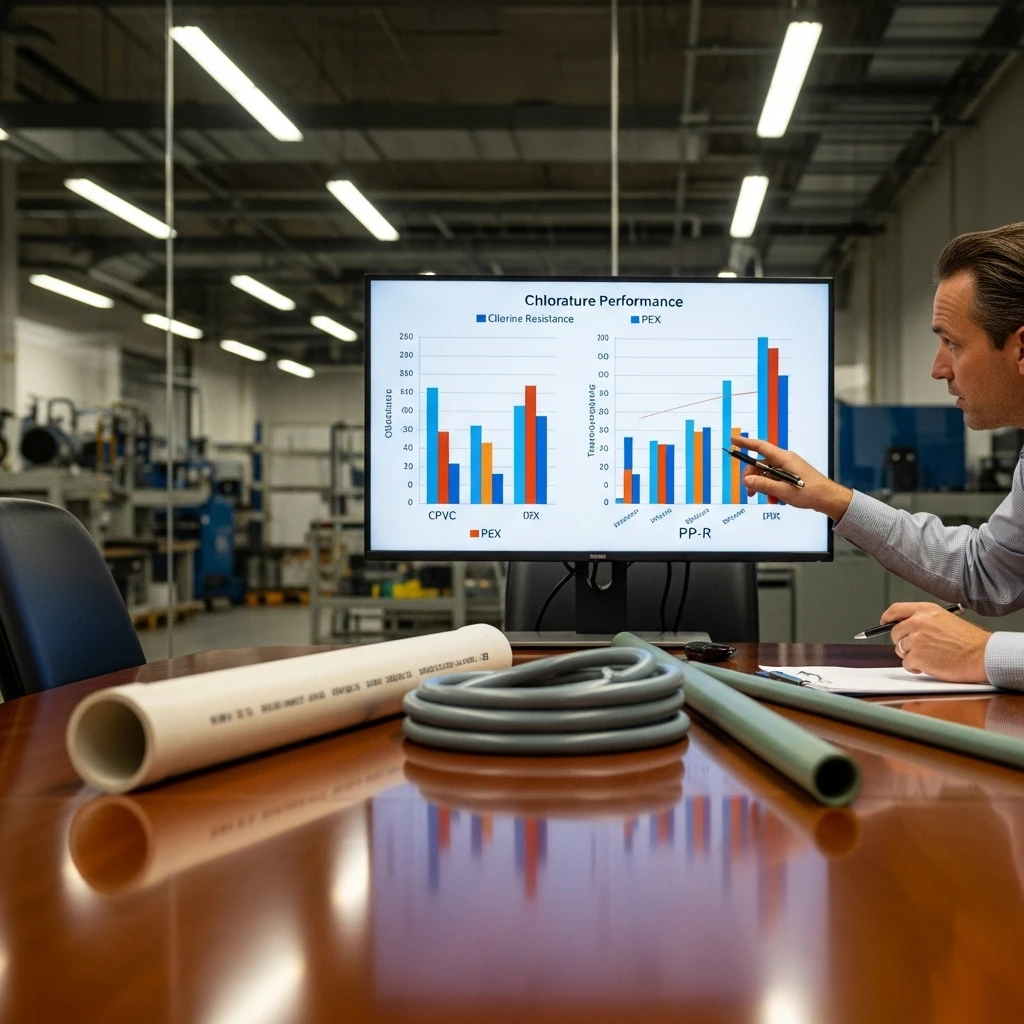
Material-Specific Testing Variations
All plastic piping materials for drinking water must meet NSF/ANSI 61, but the specific testing parameters vary based on material characteristics and typical applications.
CPVC testing places significant emphasis on chlorine resistance because CPVC is often used in chlorinated water systems. The testing verifies that the material maintains its integrity and doesn’t degrade when exposed to chlorinated water over time. This is particularly important for hot water applications where chlorine can be more aggressive.
For higher temperature applications, CPVC undergoes more rigorous heat aging tests compared to some other plastics. This reflects its common use in hot water distribution systems where temperatures can regularly exceed 140°F.
Comparison with PEX Certification
PEX (cross-linked polyethylene) certification has different emphasis areas:
- Chlorine resistance testing is less intensive than for CPVC
- More focus on cross-linking density and uniformity
- Additional testing for antioxidant leaching since PEX typically contains more antioxidants
- Different temperature rating requirements based on PEX type (A, B, or C)
Comparison with PP-R Certification
PP-R (polypropylene random copolymer) certification differences include:
- Fewer chlorine resistance requirements since PP-R is less commonly used in heavily chlorinated systems
- More emphasis on oxidative stability at high temperatures
- Different stabilizer package requirements
- Variant testing based on copolymer ratios
Certification Requirements Comparison Table
| Material | NSF/ANSI 61 Required | Special Emphasis Areas | Temperature Testing Limits |
|---|---|---|---|
| CPVC | Yes | Chlorine resistance, hot water performance | Up to 180°F |
| PEX | Yes | Cross-linking uniformity, antioxidant leaching | Varies by type (140-180°F) |
| PP-R | Yes | Oxidative stability, long-term hydrostatic strength | Up to 140°F typically |
| PVC | Yes | Plasticizer migration, vinyl chloride monomer | Lower temperature applications |
Application-Based Testing Differences
The certification process also considers typical applications. CPVC certification includes:
- More stringent hydrostatic pressure testing at elevated temperatures
- Additional cyclic pressure testing for thermal expansion concerns
- Enhanced stress crack resistance evaluation
- Greater focus on joint integrity under thermal cycling
These differences ensure each material is certified appropriately for its intended applications and operating conditions.
What Documentation Confirms NSF Certification for CPVC Pipe Products?
In our daily operations, we help clients verify certification documents regularly.
Valid NSF certification documentation includes the official NSF listing, manufacturer’s certification marks on products, detailed test reports, and written confirmation from the manufacturer. The NSF website public listing provides the most reliable verification, showing specific products, manufacturing locations, and certification scope.

Official NSF Listing
The most reliable documentation is the official NSF listing available on the NSF website. This public database provides current, verified certification information that anyone can access.
To use this resource, visit the NSF website and search by manufacturer name, product type, or standard number. The listing shows:
- Specific products that are certified
- Manufacturing locations approved for production
- Certification dates and status
- Scope of certification including which standards are met
- Any limitations or special conditions
This listing is updated regularly and reflects the current certification status. I always recommend clients check this database rather than relying solely on manufacturer claims.
Product Markings and Labels
Certified CPVC products should display proper NSF markings. These include:
- NSF logo or designation
- Standard designation (NSF-61-pw or NSF-14)
- Manufacturer’s name or identification
- Size and pressure rating information
- Production date codes for traceability
The markings should be permanent and legible. They’re typically printed directly on the pipe or included on fitting labels.
Manufacturer Documentation
Reputable manufacturers provide additional documentation including:
- Certificate of compliance for each shipment
- Test reports from independent laboratories
- Material safety data sheets
- Quality control records
- Manufacturing process documentation
Required Documentation Checklist
| Document Type | Source | Verification Method | Importance Level |
|---|---|---|---|
| NSF Online Listing | NSF International | Website search | Critical |
| Product Markings | Physical product | Visual inspection | High |
| Test Reports | Manufacturer | Review content | Medium-High |
| Certificate of Compliance | Manufacturer/supplier | Match to purchase order | High |
| Quality Records | Manufacturer | Audit review | Medium |
Verification Process
When verifying CPVC certification, follow this process:
First, check the NSF online listing to confirm basic certification. Then, verify that the specific products you’re purchasing appear in the listing. Next, inspect actual products for proper markings. Finally, request supporting documentation from your supplier.
Be cautious of these red flags:
- Products marked “NSF tested” rather than “NSF certified”
- Outdated certification documents
- Manufacturing locations not listed in NSF database
- Vague or evasive responses to documentation requests
- Missing or inconsistent product markings
Proper documentation ensures compliance with plumbing codes and provides liability protection. It also gives confidence that the products meet health and safety standards.
Conclusion
CPVC does meet NSF drinking water standards when properly certified and documented. For guaranteed NSF-certified CPVC products, choose IFAN to ensure compliance and safety in your plumbing projects.

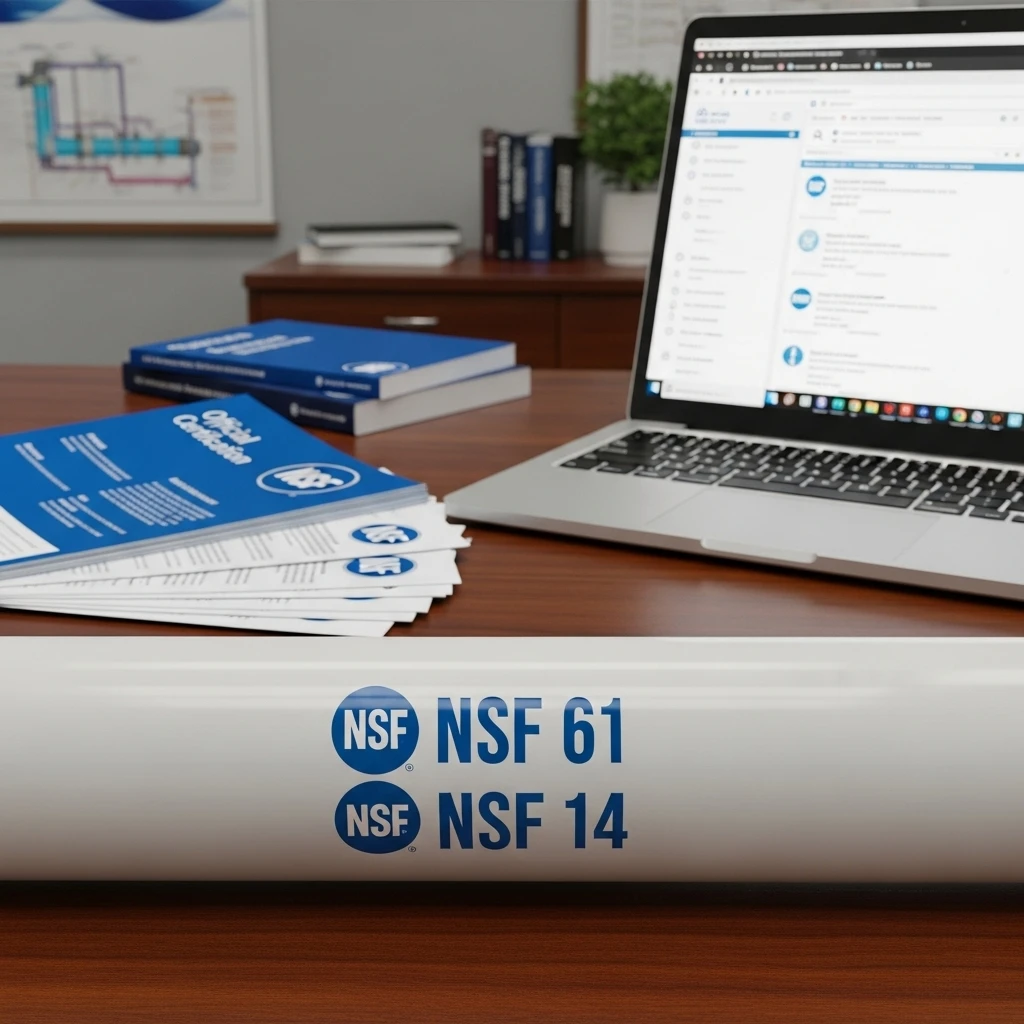
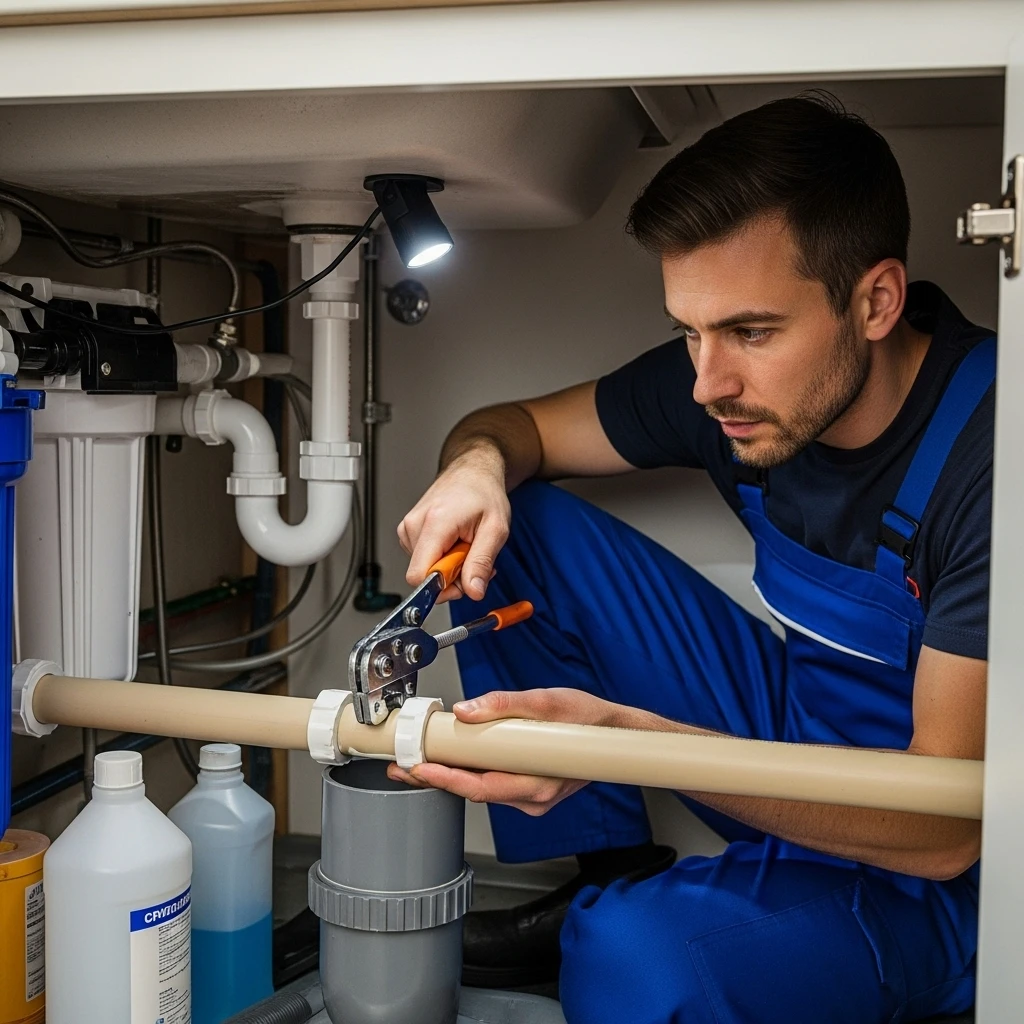
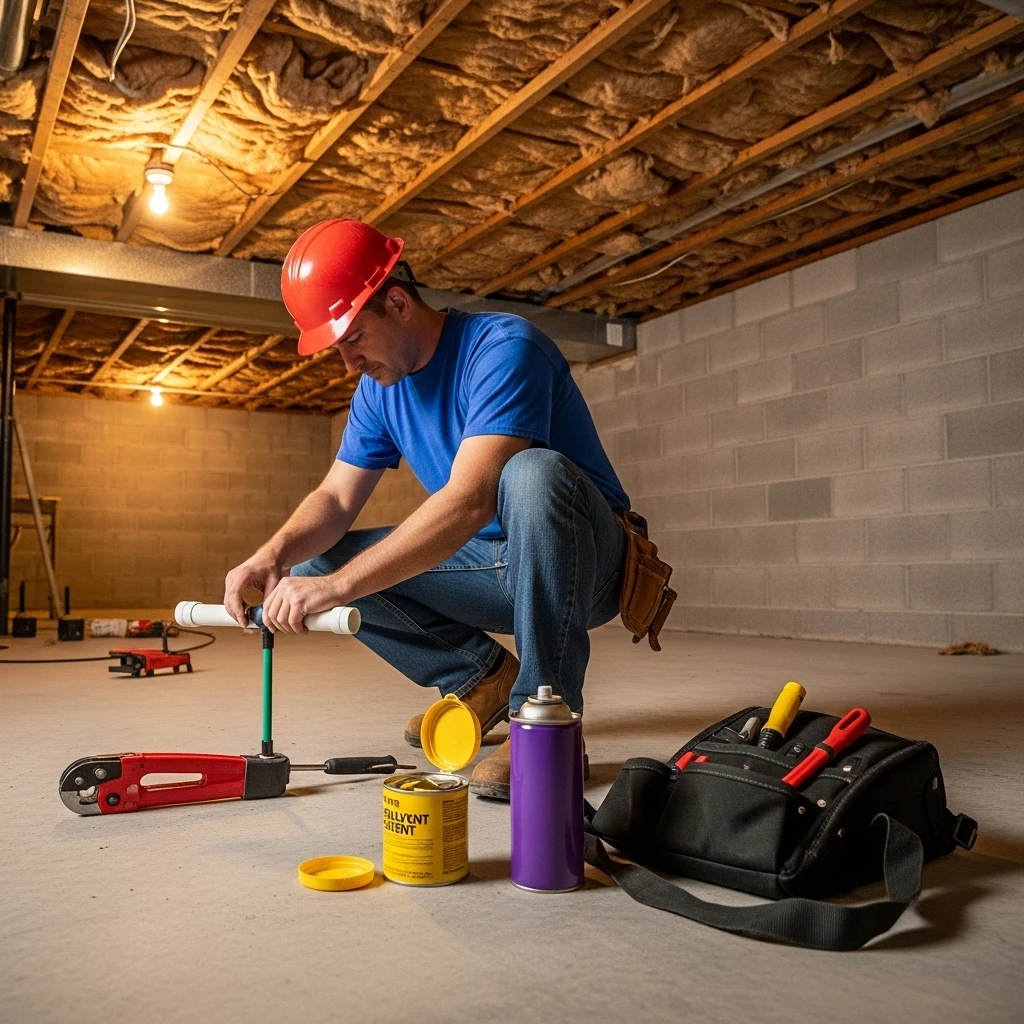
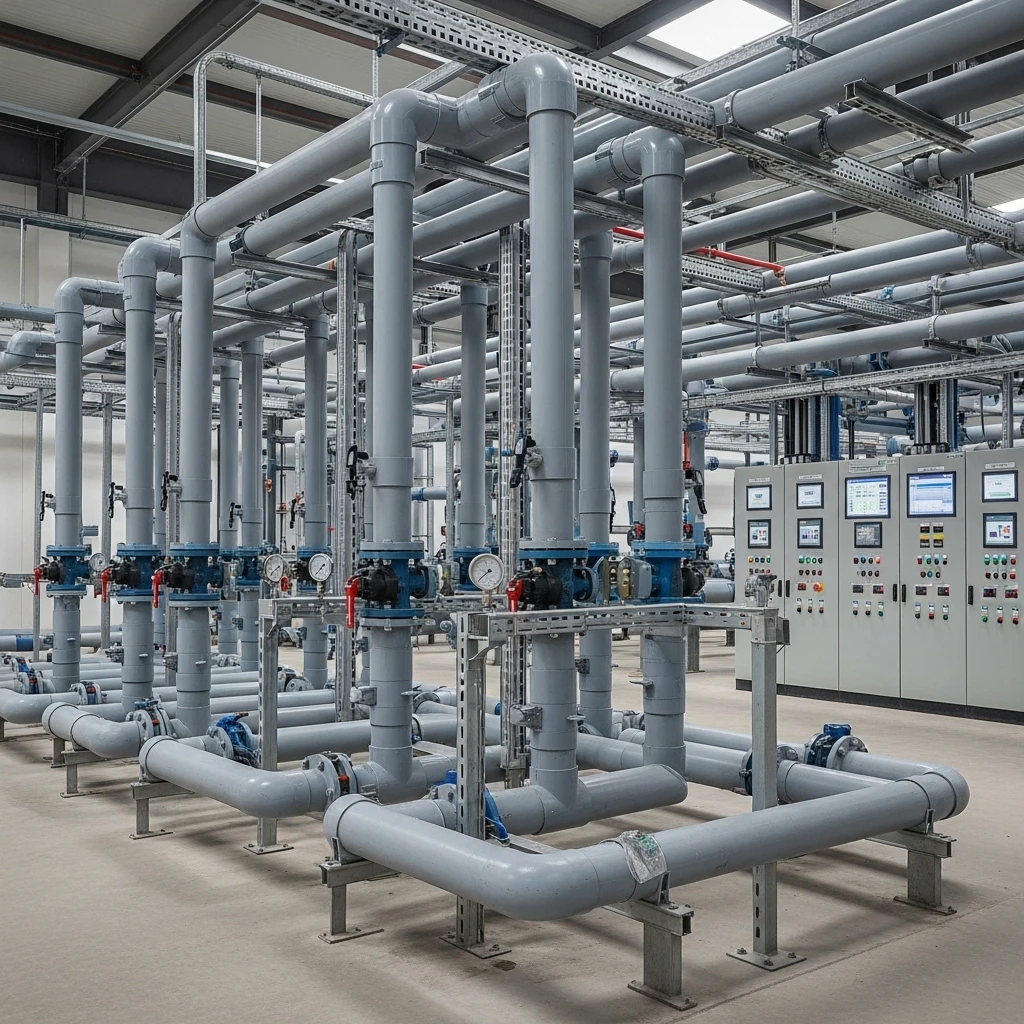









Recent Comments